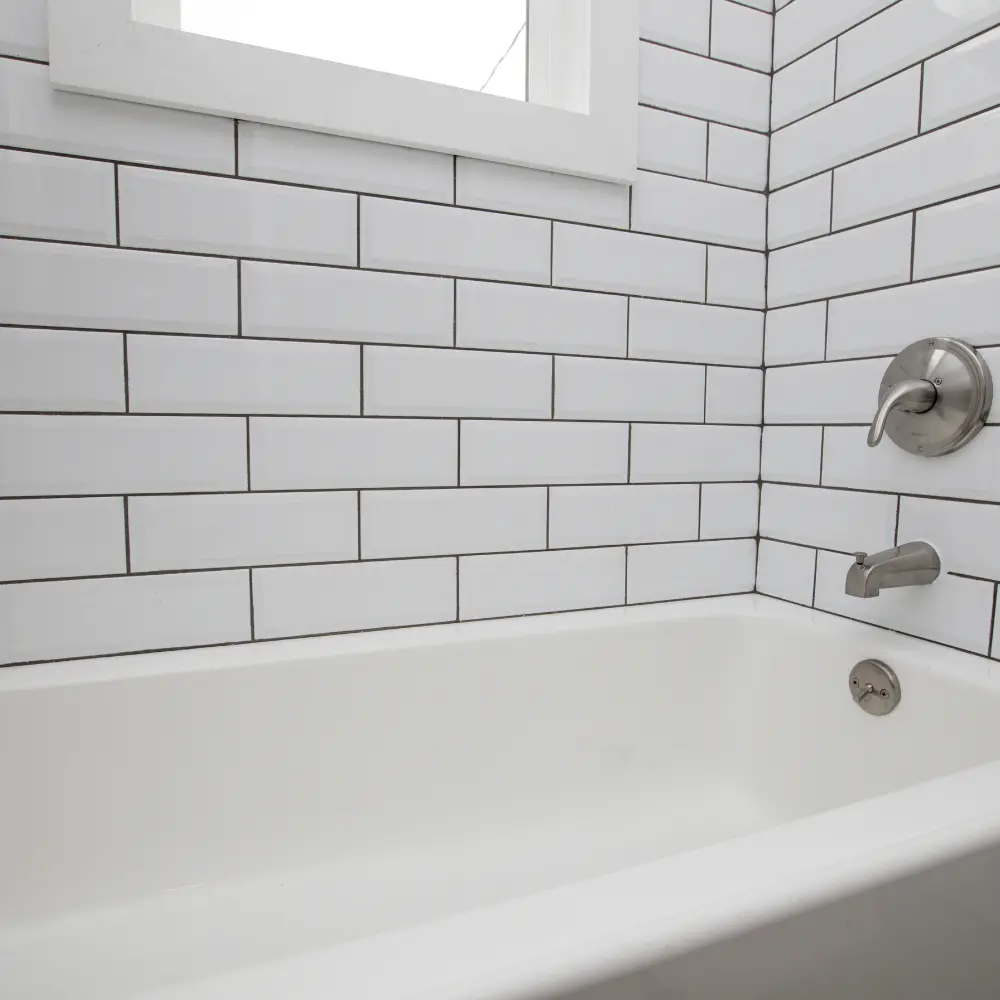Why is My Porcelain Bathtub Chipping?
Seeing your porcelain tub start to peel and chip can be both frustrating and worrying. You want your bathroom to be a place of cleanliness and relaxation, but peeling paint can turn it into a source of stress. Understanding why this common issue happens is crucial for finding an effective solution.
 There are five main reasons your bathtub might be chipping: improper reglazing, wear and tear, impact damage, harsh cleaners, and caustic drain cleaners. While these problems can make your tub look unsightly and potentially cause further damage, the good news is that they are all fixable. Professional bathtub reglazing can restore your tub’s appearance and durability, ensuring it remains a centerpiece of your bathroom for years to come.
There are five main reasons your bathtub might be chipping: improper reglazing, wear and tear, impact damage, harsh cleaners, and caustic drain cleaners. While these problems can make your tub look unsightly and potentially cause further damage, the good news is that they are all fixable. Professional bathtub reglazing can restore your tub’s appearance and durability, ensuring it remains a centerpiece of your bathroom for years to come.
Top Five Common Causes of Paint Chipping
1. Improper Bathtub Reglazing
Reglazing involves applying a new coating over the tub’s existing surface. If this process isn’t done correctly, the new glaze may not adhere properly, leading to peeling and chipping. Inexperienced technicians or DIY attempts often result in improper surface preparation, inadequate curing times, or incorrect application techniques.
Why It Matters:
- Surface Preparation:Proper surface preparation is crucial. This includes cleaning the tub to remove soap scum, oils, and any previous coatings. If these steps are skipped or not done thoroughly, the new glaze won’t bond correctly, leading to premature failure.
- Application Technique:The application technique matters significantly. Professionals use specialized equipment and methods to apply the coating evenly. DIY attempts often result in uneven layers that are more prone to peeling.
- Curing Time:Adequate curing time is essential for the coating to harden correctly. Rushing this process can weaken the finish, making it more susceptible to damage.
Potential Worsening:
Improper reglazing can cause widespread peeling, making the tub look unsightly and potentially damaging the underlying structure. Once peeling starts, it accelerates, creating an ever-worsening appearance and potential structural issues.
2. Wear and Tear
The original manufacturer’s finish can wear down over time, especially in older tubs. Regular use, water exposure, and cleaning gradually erode the coating.
Why It Matters:
- Age of Tub:Older tubs, especially those over 10-15 years old, are more likely to experience wear and tear. The constant exposure to water, cleaning agents, and physical use gradually removes the protective layer.
- Daily Use:Regular use, such as bathing and showering, creates minor abrasions and wear spots. Over time, these minor issues can accumulate, leading to considerable damage.
Potential Worsening:
As the protective layer wears away, the tub becomes more susceptible to stains, rust, and further chipping. Water can seep into the chipped areas, leading to rust and mold growth. This looks bad and can pose health risks and structural concerns.
3. Impact Damage
Dropping heavy or sharp objects into the tub can chip the porcelain surface. Items like shampoo bottles, loofah handles, or metal organizers can cause considerable damage if dropped.
Why It Matters:
- Accidents Happen:Bathrooms are spaces where accidents are common. Dropping a shampoo or shaving cream bottle can create chips on the porcelain surface.
- Material Sensitivity: Porcelain, while durable, is sensitive to sharp impacts. Even a tiny chip can expand over time, especially with continued use.
Potential Worsening:
Initial chips can expand with continued use and impact, leading to larger areas of damage. This can result in water penetrating the chipped areas, causing further deterioration and potential rusting of the underlying metal structure.
4. Harsh Cleaners
Acidic or abrasive cleaning products can erode the tub’s protective coating. Regular use of scouring powders, vinegar, or wire brushes can also weaken the surface.
Why It Matters:
- Chemical Reactions: Harsh cleaners can cause chemical reactions that weaken the protective glaze. Over time, this makes the surface more prone to chipping and peeling.
- Physical Abrasion:Abrasive tools like wire brushes can scratch and wear down the protective coating, accelerating the deterioration process.
Potential Worsening:
Using harsh cleaners can accelerate the peeling process, making the tub look worse. Additionally, weakened surfaces are more susceptible to staining and harboring bacteria, making the tub less hygienic.
5. Caustic Drain Cleaners
Chemical drain cleaners can severely damage the tub’s finish. Frequent use of strong chemical cleaners can corrode the coating.
Why It Matters:
- Corrosive Nature:Caustic drain cleaners are highly corrosive and can damage the pipes and the tub’s finish if they come into contact.
- Frequent Use:Regular use of these cleaners can lead to considerable damage over time, causing the protective layer to degrade.
Potential Worsening:
Damage from caustic cleaners can lead to extensive peeling and may require professional intervention. The corrosive nature of these chemicals can cause profound damage, making repairs more complicated and expensive.
Bathtub Reglazing in New Jersey: A Cost-Effective Way to Restore and Save Your Bathtubs
Bathtub reglazing can be a meaningful change, restoring your tub to its former glory for a fraction of the replacement cost. This professional service addresses all the common issues that cause peeling and chipping, ensuring your tub looks and feels new again. With proper reglazing, your bathroom can once again be a place of cleanliness and relaxation, free from the stress of unsightly and deteriorating fixtures.
Remember, you’re not alone in facing these problems. Many homeowners experience peeling and chipping in their bathtubs due to common issues like improper reglazing, wear and tear, impact damage, harsh cleaners, and caustic drain cleaners. It’s important to understand that these issues are common and not a result of personal neglect. By seeking professional help, you can effectively solve these problems and enjoy a beautifully restored bathtub for years.

